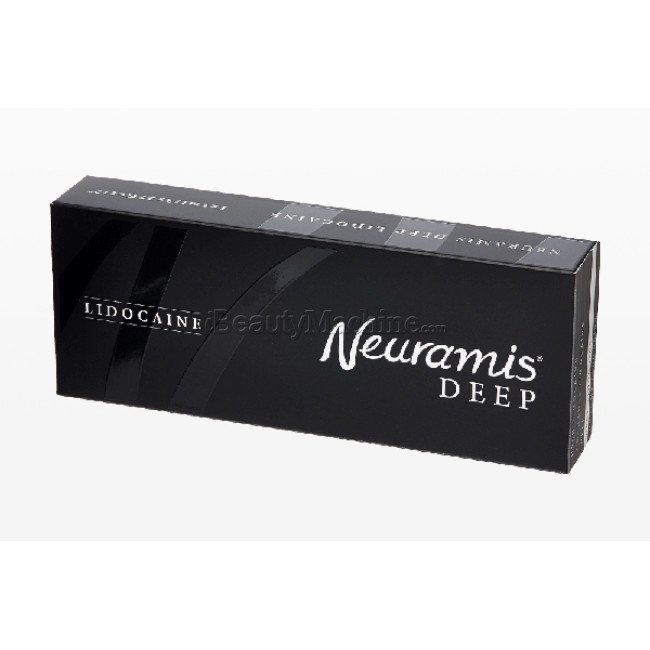Introduction to Cold Therapy
Cold therapy, also known as cryotherapy, refers to the intentional exposure of the body to low temperatures for therapeutic benefits. This practice has a rich history, dating back to ancient civilizations where ice and cold water were used to alleviate pain and inflammation. The Greeks, Romans, and even Egyptians utilized cold applications in their medicinal practices, recognizing the soothing effects of cold on the body and mind.
In recent years, the concept of cold therapy has evolved beyond traditional methods such as ice packs and cold baths. Modern advancements have introduced more controlled and efficient techniques, including whole-body cryotherapy chambers and localized cryo applications, making the practice more accessible and appealing. The growing body of research supporting its benefits has contributed to its rising popularity, particularly within the realm of mental health.
In contemporary discussions surrounding mental well-being, cold therapy has gained attention for its potential mood-enhancing effects. A number of studies indicate that cold exposure may help reduce symptoms of anxiety and depression by triggering the release of neurotransmitters like norepinephrine and endorphins. These biochemical changes can elevate mood and promote feelings of relaxation and well-being. As awareness of mental health issues increases globally, individuals are increasingly seeking alternative therapies to complement traditional interventions, further fueling interest in cold therapy.
As we delve deeper into the science behind cold therapy and its implications for mental health, it becomes evident that this age-old practice may unlock new avenues for therapeutic intervention. The intersection of historical usage and modern research paves the way for an enriching exploration of how cold exposure can impact mental health positively.
The Bodily Response to Cold Exposure
The human body exhibits a series of physiological responses when exposed to cold temperatures. These involuntary reactions are crucial for maintaining homeostasis and can significantly influence mood and mental clarity. Upon exposure to cold, the body initiates a process known as the “cold shock response.” This response typically begins with a sudden gasp, followed by increased heart rate, elevated blood pressure, and heightened alertness. These immediate reactions are attributed to the release of stress hormones, such as norepinephrine and adrenaline.
The heightened levels of norepinephrine not only enhance blood circulation but also contribute to improved mental focus and clarity. This hormonal surge can generate a sense of euphoria, often referred to as the “runner’s high,” which is a well-documented phenomenon associated with intense physical activity. Additionally, cold exposure has been shown to impact the production of endorphins, the body’s natural painkillers, further promoting a positive emotional state.
Moreover, cold exposure stimulates the sympathetic nervous system, which is responsible for the fight-or-flight response. This activation can aid in reducing feelings of anxiety and depression, as the body reacts defensively to perceived stressors. The temporary discomfort caused by cold therapy may also facilitate resilience, enabling individuals to cope better with life’s challenges. Understanding these physiological reactions can provide valuable insights into the potential mental health benefits of integrating cold exposure, like ice baths, into wellness routines.
In conclusion, the body’s multifaceted response to cold exposure demonstrates its potential effects on mood and cognitive function. The activation of various hormones and neural pathways not only prepares the body to handle environmental stressors but can also enhance mental resilience and clarity.
Understanding the Mental Health Benefits
Cold therapy, particularly the practice of ice baths, has garnered attention for its potential benefits to mental health, with various studies attesting to its therapeutic effects. One of the most significant advantages of this chilling method is its ability to reduce symptoms of anxiety and depression. Exposure to cold water can stimulate the production of endorphins, the body’s natural mood elevators. This biochemical response often leads to a feeling of euphoria, which may help alleviate feelings of sadness or anxiousness.
Furthermore, anecdotal evidence suggests that engaging regularly in cold water immersion can promote emotional resilience. The initial shock of cold water can serve as a form of controlled stress, training the mind to handle adversity better. Participants often report a heightened sense of control over their body and emotions after enduring the discomfort of ice baths, which can enhance coping mechanisms in everyday life. This adaptive process may also help in developing a more robust mental framework, enabling individuals to bounce back more effectively from stressors.
In addition to anxiety and emotional fortitude, cold therapy has also been linked to improvements in overall well-being. A consistent routine of ice baths can lead to enhanced sleep quality, a vital component of mental health. Quality sleep has been shown to improve cognitive function and mood stability, further solidifying the argument for cold exposure as a beneficial practice. Moreover, the community aspect of sharing experiences with ice baths can lead to social interaction, which is crucial for mental wellness, thereby fostering a sense of belonging and support.
In summary, the mental health benefits associated with cold therapy, such as reduced anxiety and depression, enhanced emotional resilience, and improved overall well-being, make it a compelling option for individuals seeking alternative treatment methods. The fusion of scientific study and personal experience supports its integration into daily routines, potentially transforming mental health approaches for many.
The Science Behind Ice Baths and Mood Enhancement
Cold exposure, particularly ice baths, has gained recognition in recent years for its potential benefits in enhancing mood and overall mental health. Scientific research has begun to unravel the mechanisms behind these benefits, highlighting the neurochemical processes that occur during cold exposure. One of the primary reactions to cold therapy, such as ice baths, is the release of endorphins, often referred to as the body’s natural painkillers. Endorphins contribute to feelings of happiness and euphoria, thus playing a crucial role in mood stabilization.
One landmark study conducted by the University of Groningen explored the effects of cold exposure on mood and found that participants who engaged in regular ice baths reported lower levels of stress and anxiety. The researchers observed a significant increase in serotonin levels, a neurotransmitter that plays a vital role in regulating mood. Moreover, the icy conditions prompted the body to respond with heightened alertness and energy, which can be particularly beneficial for individuals experiencing mental fatigue or depressive symptoms.
Furthermore, a biological response occurs when the body is subjected to extreme cold. This response includes vasoconstriction, where blood vessels narrow to conserve heat. Once the body warms up again, there is a rebound effect where blood vessels dilate, allowing freshly oxygenated blood to flow through the body. This increase in blood circulation can also contribute to an enhanced sense of well-being, providing a natural ‘reset’ of sorts for the mental state.
Additional research has demonstrated that regular engagement in cold exposure therapies can lead to long-term improvements in mood regulation. For those struggling with mood disorders, incorporating ice baths into a treatment plan may offer a complementary approach to traditional therapies. As the exploration of the science behind ice baths continues, the potential for enhancing mental health through cold therapy remains promising.
Safety Considerations and Best Practices
Cold therapy, particularly through the practice of ice baths, can provide several mental health benefits. However, it is crucial to prioritize safety to ensure a positive experience while minimizing risks. Not everyone should engage in cold exposure. Individuals with cardiovascular conditions, respiratory issues, or those prone to hypothermia should consult a healthcare professional before attempting ice baths. Pregnant individuals or those with specific mental health disorders may also need to exercise caution, as the shock from cold exposure may exacerbate certain conditions.
For those who choose to integrate ice baths into their routine, it is essential to start gradually. Begin with short exposure times, gradually increasing the duration as one becomes accustomed to the cold. Starting with just a few minutes and then slowly increasing to around 10 to 15 minutes can help the body adapt effectively. It is also advisable to monitor water temperature, ensuring it remains between 50°F to 59°F (10°C to 15°C), which is considered optimal for mental health benefits without excessive discomfort.
Proper techniques during cold therapy are vital for maximizing benefits. Before entering the ice bath, it is helpful to engage in a brief warm-up to prepare the body. Keep the body submerged to the neck for maximum effect while allowing the face to remain above water. This positioning can help mitigate the risk of shock and allow breathing to remain steady. Breathing techniques, such as deep, controlled breaths, can encourage relaxation and enhance the therapeutic effects of cold exposure.
Listening to one’s body is paramount during these sessions. If dizziness, extreme discomfort, or numbness occurs, it is essential to exit the bath immediately. Always have a warm-up plan ready post-exposure to avoid prolonged exposure to cold temperatures, which can lead to negative health consequences. By following these safety considerations and best practices, individuals can safely incorporate cold therapy into their mental health routines.
Integrating Cold Therapy into a Holistic Wellness Routine
Combining cold therapy with other wellness practices can significantly amplify its benefits for mental health and overall well-being. Cold therapy, specifically through ice baths and exposure to cold environments, has been shown to reduce stress and anxiety levels while boosting mood. When integrated with practices such as meditation, yoga, and physical exercise, the synergistic effects can be particularly profound.
Meditation, known for its ability to promote relaxation and enhance emotional resilience, can be enhanced when preceded by cold therapy. The exposure to cold activates the body’s stress response, initially triggering a fight-or-flight reaction. However, once the therapy concludes, this heightened state of arousal can facilitate a deeper meditative experience. Practicing meditation after an ice bath can help individuals cultivate mindfulness and foster a clearer mental state, potentially leading to reduced negative thought patterns.
Similarly, incorporating cold therapy into yoga routines can create a unique experience. The invigorating effects of cold exposure can enhance focus and energy during yoga practices. As participants move through various asanas, the shock of cold can heighten awareness of the body, allowing for more profound connections between mind and body. Pairing cold therapy with yoga can also amplify the benefits of muscle recovery and reduce inflammation, thus improving overall performance and mental clarity.
Physical exercise further complements cold therapy, as both are known to promote the release of endorphins, the body’s natural mood lifters. Engaging in a vigorous workout followed by an ice bath can enhance recovery time while concurrently elevating mood. The result is a well-rounded approach to wellness that not only targets physical fitness but also addresses mental health, fostering resilience and emotional stability.
By thoughtfully incorporating cold therapy into existing wellness practices, individuals can create a comprehensive routine that enhances their mental well-being and promotes a healthier lifestyle overall.
Personal Stories and Testimonials
The impact of cold therapy on mental health is not merely theoretical; numerous individuals have embraced ice baths and cold exposure as a transformative practice in their lives. For many, these experiences have significantly altered their outlook on mental well-being and resilience. One individual, Sarah, a 32-year-old who struggled with anxiety, shared how her initial reservations about taking ice baths shifted after she tried one on a whim. “I felt an immediate rush of clarity,” she explained. “It was like all the noise in my head quieted down. Since then, I haven’t missed a session.” Her testimony encapsulates the refreshing effect that cold therapy can have on mental health.
Another example is Marcus, a veteran and former athlete, who enlisted cold therapy as part of his routine to combat depression. He attests, “Every time I step into the cold, I am reminded of my strength and resilience. It’s not just about enduring the ice; it’s a mental reset for me.” His statement reflects how ice baths can serve as a catalyst for mental fortitude, allowing individuals to confront emotional challenges with renewed focus.
Moreover, Jessica, an entrepreneur, noted that her productivity increased significantly after incorporating cold showers into her morning ritual. “I used to dread mornings, but now, I wake up eager to face the day,” she stated. “The cold therapy not only boosts my mood but also enhances my focus.” Her experience highlights the potential of cold exposure to enhance cognitive performance and overall mental health.
While each individual’s experience with cold therapy may differ, these stories collectively underline its varied applications in real-life scenarios. They illustrate the psychological and emotional benefits that ice baths and cold exposure can offer, emphasizing the value of addressing mental health through alternative therapies.
Potential Drawbacks and Limitations
While cold therapy, particularly ice baths, has been linked to several positive effects on mental health, it is essential to acknowledge the potential drawbacks and limitations associated with this treatment modality. Firstly, cold therapy may not be suitable for everyone. Individuals with certain medical conditions, such as cardiovascular diseases, respiratory issues, or Raynaud’s phenomenon, may experience adverse effects from exposure to extreme cold. In such cases, it can exacerbate symptoms rather than provide the anticipated mental health benefits.
Moreover, the scientific community has not reached a definitive consensus on the efficacy of cold therapy for all individuals. Some people may find that while it offers temporary relief or mood enhancement, it does not serve as a long-term solution for underlying mental health issues such as depression or anxiety. Consequently, it is crucial for those considering cold therapy to consult with healthcare professionals before incorporating it into their treatment regimen.
Furthermore, there is a risk of psychological overreliance on cold therapy. Individuals may begin to view ice baths as a primary method for managing anxiety or stress, potentially neglecting other essential mental health treatments such as therapy or medication. This reliance could result in an incomplete approach to mental well-being, as it overlooks the importance of holistic methods that address various aspects of mental health.
Lastly, the subjective nature of cold therapy experiences means that outcomes can vary significantly among individuals. While some may report improvements in mood and clarity post-treatment, others might not experience any discernible benefits or even feel worse afterward. This variability underscores the need for a balanced approach when considering cold therapy, integrating additional mental health strategies as necessary for comprehensive care.
Conclusion and Future Directions
In examining the role of cold therapy, particularly through ice baths, in the realm of mental health, it becomes clear that this approach holds promise as a complementary practice alongside traditional therapeutic options. The evidence presented suggests that cold exposure may positively influence mood regulation and overall mental well-being by triggering physiological responses that enhance emotional resilience. This intersection of physical and mental health illustrates the potential for integrative approaches within the field of psychology.
While the current research has begun to outline the beneficial aspects of cold therapy, further investigation is essential to fully understand its mechanisms and long-term effects. Future studies should aim to establish standardized protocols, examining factors such as duration, frequency, and the specific temperatures that optimize the mood-enhancing benefits of cold exposure. Additionally, exploring the individual differences in response to cold therapy could yield valuable insights, identifying which populations are most likely to benefit.
As a growing area of interest, there is a significant opportunity for collaboration between psychologists, wellness practitioners, and researchers specializing in the physiological impacts of cold exposure. Such partnerships could foster a deeper understanding of how cold therapy can be effectively integrated into mental health treatment approaches. Moreover, public awareness campaigns could serve to educate individuals about the potential psychological benefits of cold therapy, promoting it as a simple and accessible option for those seeking to enhance their mental well-being.
In summary, cold therapy presents an innovative and intriguing avenue in mental health care. As research continues to evolve, it is imperative for both practitioners and individuals to remain open to exploring these possibilities, helping to create a more comprehensive understanding of mental health treatments. For those curious about alternative approaches, ice baths may very well be worth considering as part of a holistic mental health strategy.



